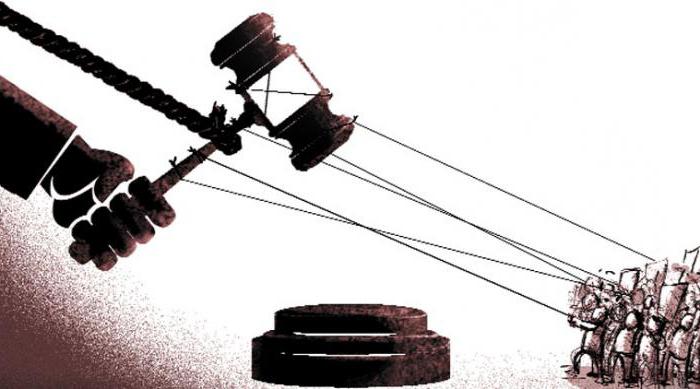The dispositive method is one of the ways of legal coordination of social relations taking place in various legal areas. Where is this technique most often used, what origin has its name, what is its specificity? Let’s look for answers to all your questions.
Scientific provisions
The doctrine of the methods of law arose after a wide discussion about the legal system. Scientists have put forward the theory of the inappropriateness of using as a basis for the classification of industries and elements of law only a subject. It was found that there are several features of the legal status. The most common of them are subjective autonomy and heteronomy. The first indicates freedom and equality of subjects, while the second indicates power-subordinate relations. Subsequently, these two states were named in the dispositive method and the imperative. With the development of legal science, the concept of this legal element has expanded. So L.S. Yavich considered methods to be complex categories and distinguished a number of components in them.
The first of these is the procedure for establishing subjective powers and obligations. The second is the relationship between the subjects. The third is the degree of certainty of the granted rights, as well as freedom of action in legal relations. The fourth - the presence or absence of specific links between rights and obligations, and, finally, the fifth - guarantees for their provision. S.S. Alekseev, in turn, believed that the structure of methods was a complex structure. It includes such elements as the general legal status of entities, the relationship between them and the grounds for their occurrence, change and termination, as well as sanctions of a legal norm.
Origin of the concept
The term “dispositiveness” uses the late Latin dispositi vus as its source, literally meaning “discerning, disposing”. The literal meaning of this word is "allowing choice." The dispositive method of legal regulation in the legal literature has many definitions. So, the Great Soviet Encyclopedia interprets this concept as an opportunity to dispose of procedural powers in defense. The most common definition of a method is as a way of influencing existing social relations. The interpretation of this concept is mainly carried out by lawyers studying civil law.
Classification of coordination techniques
Imperative and dispositive are most often considered as the main ways of regulation arising and existing in society of social relations. The method of law needs to be studied to establish the nature of certain regulatory requirements, to determine the measure of freedom in the behavior of subjects, the importance of certain ties for the state and society as a whole.
Consider what constitutes an imperative and dispositive method. In the most general sense, the first is an imperious influence and strict subordination of all participants in the relationship. It can be said that subjects have the right to commit only the actions authorized by them. There is an inequality of participants. The dispositive method of law, in turn, is characterized by its inherent property of decentralization of management. In other words, participants are given the opportunity to independently decide how to behave within the legal framework.
Legal basis
The dispositive method is based on the provisions enshrined in some regulatory acts.Thus, the postulates set forth in chapter 2 of the Constitution of the Russian Federation give subjects of civil relations legal freedom, only partially limiting it to a certain framework. The dispositive method is also displayed in the norms of the Civil Code. The boundaries of legal freedom are also determined by land, family, tax, criminal law.
Scope of opportunity
It should be taken into account and taken into account the fact that the concept of dispositivity is exclusively legal. It is important in conditions of freedom to prevent arbitrariness. Therefore, despite the fact that the dispositive method of legal regulation is characterized, first of all, by the vastness of choice, the subjects of legal relations are free to commit only lawful acts. Non-compliance with this criterion can be characterized as a phenomenon opposite to dispositiveness, as a violation of law.
Legal freedom
This term is often used in definitions of the concept of dispositivity. What is legal freedom? It is expressed in the opportunities that participants in the relationship can use. Firstly, this is the acquisition of either subjective authority, or duties, as well as the rejection of this. Secondly, this is a volitional definition of the structure of one’s personal right, both independent and joint with the other side of the legal relationship. Thirdly, it is its implementation. The right can be realized not only by its direct application, but also by refusal from it or by transferring it to other persons. Fourthly, legal freedom also implies a guarantee of rights, the ability to use all legal protection methods for their protection. And finally, the fifth possibility is the choice of responsibility in relation to the offender.
Legislation Reflection
Dispositive norms easy to find in any of the acts of the state. As a rule, they contain the design "unless otherwise provided in the contract." This means that such norms enshrine a certain generally accepted rule of behavior, which should be applied only when the parties to the relationship have not agreed to do otherwise.
Definition
There is no single answer to the question of what is a dispositive method. For example, S.S. Alekseev writes that the source of legal energy in such regulation is the legitimate and, most importantly, independent actions of the subjects, and not the imperious will of the state. R.Z. Livshits describes the dispositive method as the legislator’s desire to regulate only the basic lines of behavior, the rejection of detailed and thorough regulation. IN AND. Goiman and T.N. They write radically that this method of coordination is based on taking into account the initiative and independence of the participants.
Dispositiveness in civil law
The regulatory method under consideration is the basic, generic for this branch of law. Dispositiveness reflects all the civil specifics. In this kind of legal relationship, principles such as the equality of their subjects, their independence. Due to its importance for civil regulation, dispositiveness is often referred to the basic principles on which this branch of law is based. This is due to the fact that freedom permeates various stages of the mechanism of coordination of civil relations (for example, issues of legal personality, legal facts), and also manifests itself in their content (in competencies and obligations, in protecting violated rights). Earlier, dispositivity was traditionally considered the concept of only civil law. And only later it became apparent that this phenomenon is not confined to the framework of only one legal industry and has an interdisciplinary nature.
State law
The considered method of legal regulation uses not only civil law. It is also used in power relations.Thus, the dispositive method of constitutional law affects the relevant relations by establishing the principles of equality and autonomy of participants, the duty of non-interference in the competence of the subjects of the federation, as well as individual state bodies. In addition, the Constitution reflects competencies and duties of citizens including the right to freedom of civil relations. And even in administrative law the dispositive method is used. An example is the regulation of relations between hierarchically equal, non-subordinate entities - public authorities. Dispositivity can also be found in tax law.
Procedural relationship
Dispositive principles also take place in relations that arise during the consideration and resolution of criminal and civil cases. Procedural relations in the Russian Federation are adversarial. Their participants have equal rights to provide evidence, to challenge opposing statements, to protect their rights. Thus, even the legal branches, in which the leitmotif is the use of coercive measures, the consolidation of power regulations, also use the dispositive method of legal regulation.
